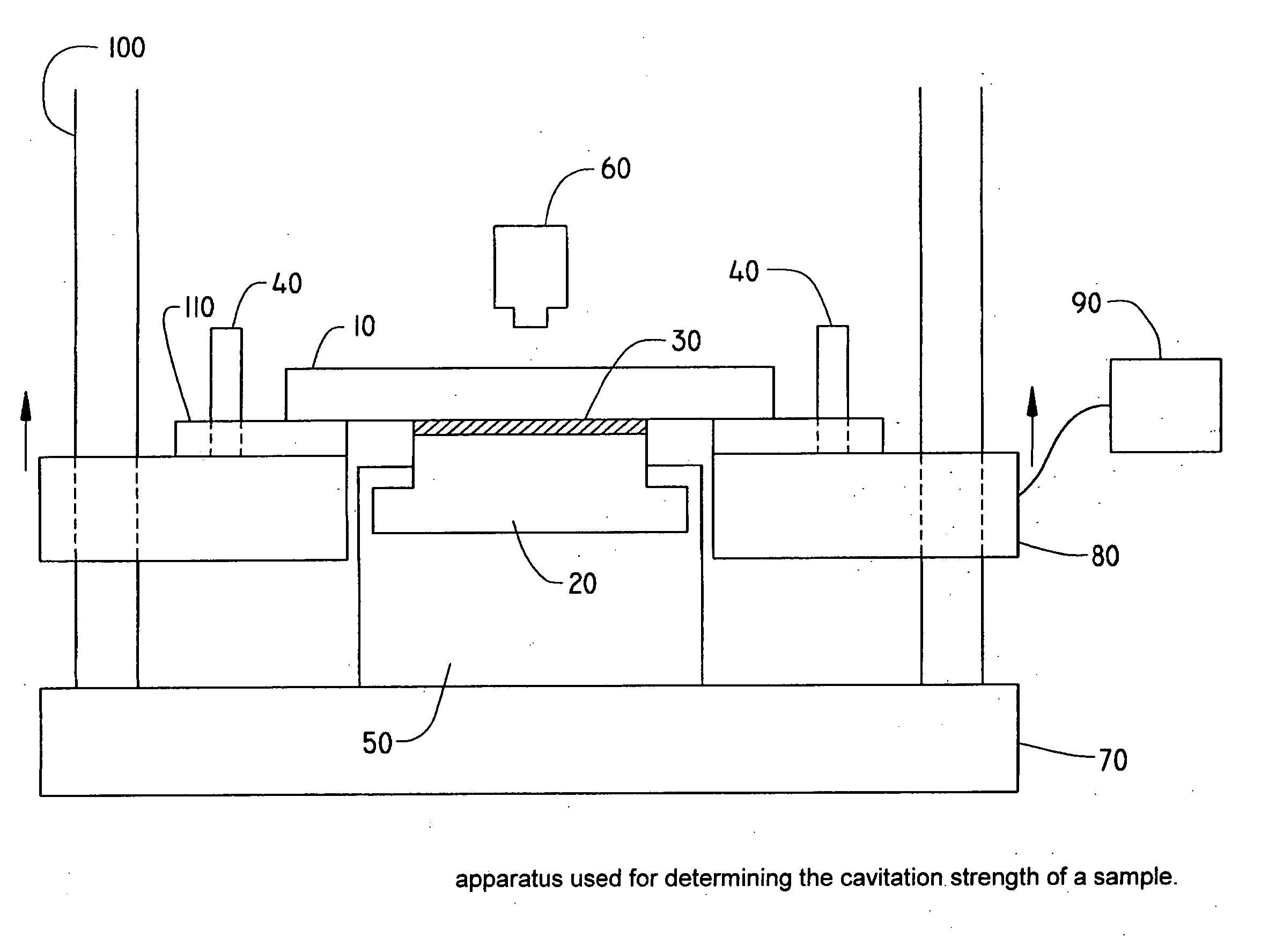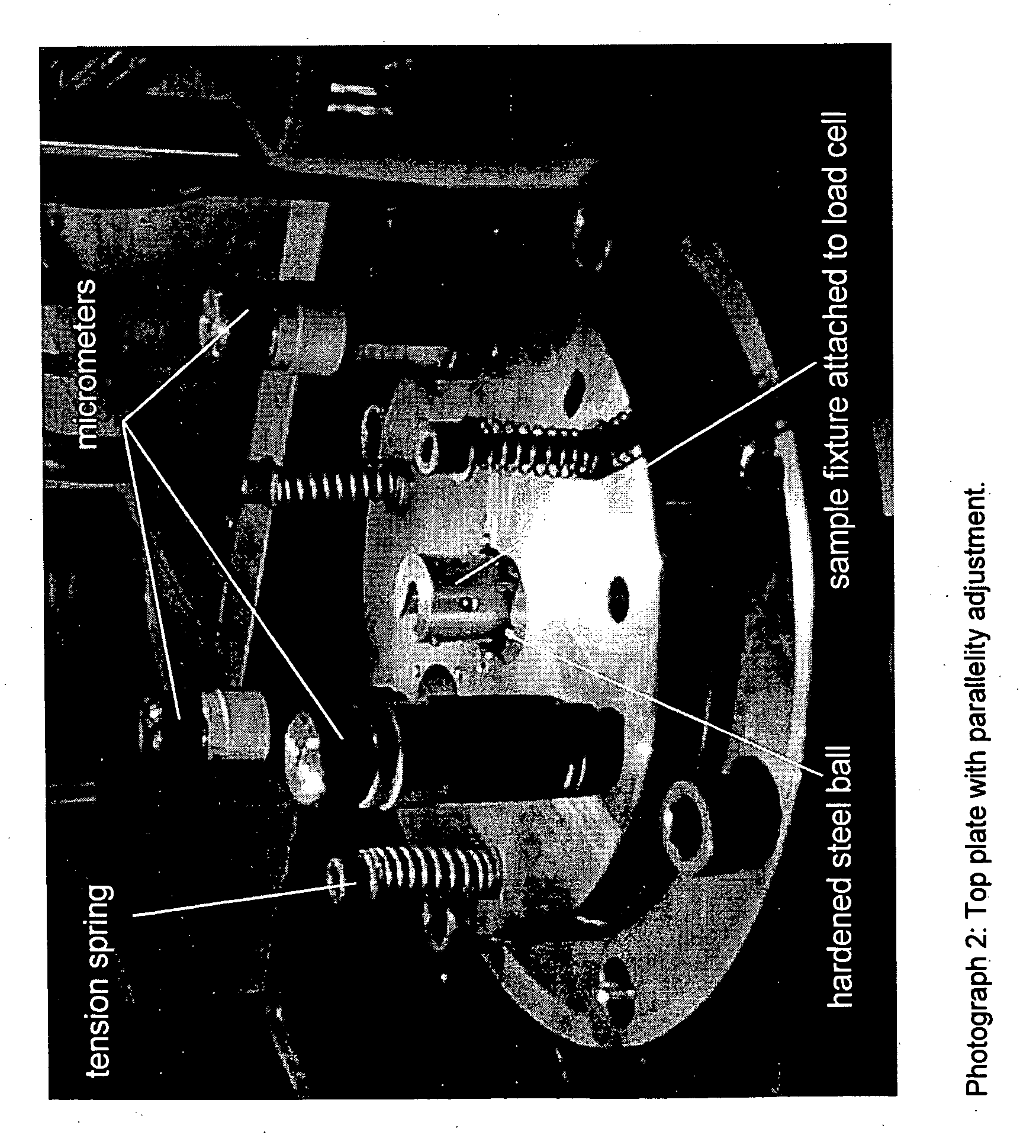Coated optical fibers
- Summary
- Abstract
- Description
- Claims
- Application Information
AI Technical Summary
Benefits of technology
Problems solved by technology
Method used
Image
Examples
example 2
[0212] A coating was formulated using 69.7 wt % of a polyether urethane acrylate oligomer having a polyether backbone comprising on average two blocks polypropylene glycol having an average Mw of about 4000 and being end-capped with ethoxy groups (the oligomer is the reaction product of a polyether polyol, toluene diisocyanate and 2-hydroxyethyl acrylate), 20.4 wt % 2-phenoxyethyl acrylate, 6.4 wt % tripropyleneglycoldiacrylate, 2.0 wt. % Lucerin TPO, 0.3 wt % DC190, 0.2 wt % DC57 and 1 wt % mercapto silane.
[0213] The equilibrium modulus was 0.6 MPa. The modulus E′ at 23° C. was 0.7 MPa. The relative Mooney plot is given in FIG. 4. The cavitation strength at the tenth cavity σ10 was measured to be 1.24 MPa after 1 J / cm2 cure (see FIG. 3); the σ10 / E′23 was 1.77; Go=31 J / m2.
example 3
[0214] A primary coating composition was formulated using 38.8 wt % of an aliphatic polyether-polycarbonate based urethane acrylate oligomer having an average Mw of 4000 (the oligomer is derived from 2-hydroxyethylacrylate, isophoronediisocyanate, and equal amounts of polypropyleneglycol diol and a copolymer diol of 10-15 wt % polyether / 85-90 wt % polycarbonate), 48.5 wt % of N butylurethane O ethyl acrylate (CL1039), 9.7 wt. % isodecyl acrylate and 3 wt % of Irgacure 184 photoinitiator.
[0215] The equilibrium modulus is 1.31 MPa. The calculated volumetric thermal expansion coefficient α23 is 6.74×10−4 K−1.
example 4
[0219] A secondary coating composition was formulated using 50 wt. % of an aliphatic polyether based urethane acrylate oligomer (the oligomer is derived from 2-hydroxyethylacrylate, isophorone diisocyanate, and polytetrahydrofuran having Mn of 1000), 32.8 wt. % of 2-hydroxyethylacrylate, 17.2 wt. % of HEA-IPDI-5CC adduct (as described for coating U in Table 1 above) and 1 wt. % of Irgacure 184.
[0220] The calculated α23 is 6.42×10−4K−1, the rate of polymerization is 2.99 mol / l sec.
PUM
| Property | Measurement | Unit |
|---|---|---|
| Temperature | aaaaa | aaaaa |
| Length | aaaaa | aaaaa |
| Length | aaaaa | aaaaa |
Abstract
Description
Claims
Application Information
 Login to View More
Login to View More - R&D
- Intellectual Property
- Life Sciences
- Materials
- Tech Scout
- Unparalleled Data Quality
- Higher Quality Content
- 60% Fewer Hallucinations
Browse by: Latest US Patents, China's latest patents, Technical Efficacy Thesaurus, Application Domain, Technology Topic, Popular Technical Reports.
© 2025 PatSnap. All rights reserved.Legal|Privacy policy|Modern Slavery Act Transparency Statement|Sitemap|About US| Contact US: help@patsnap.com



